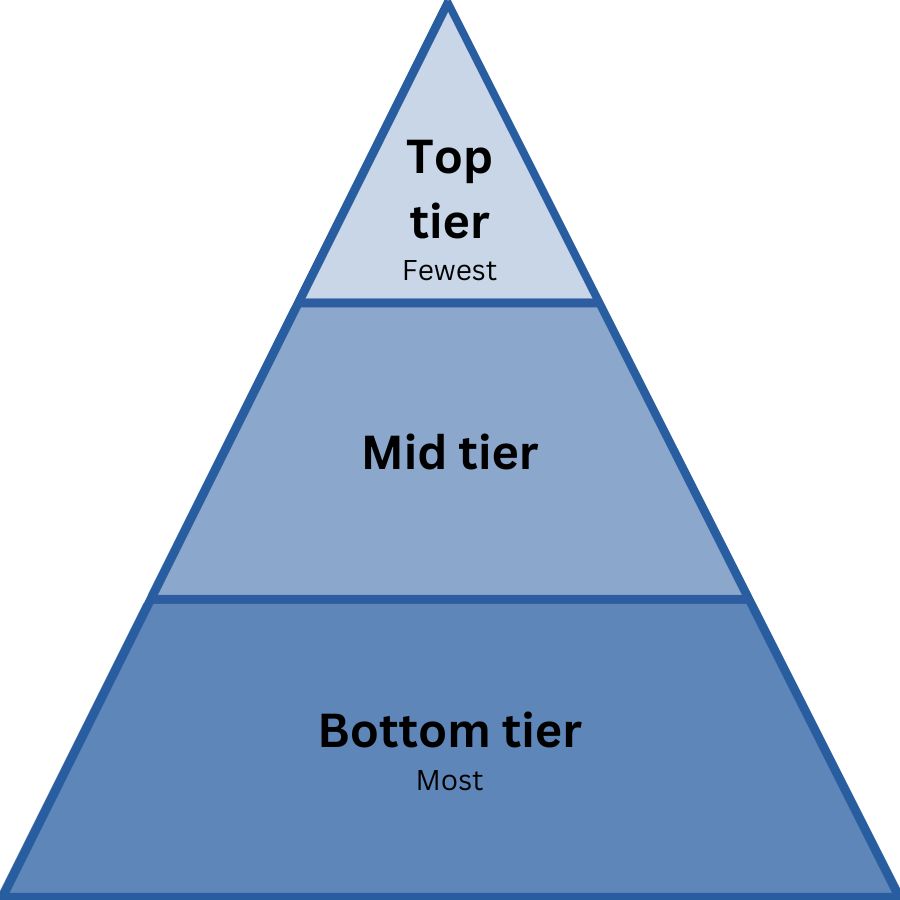Casting back 15 years or so, the idea of client segmentation in financial advice wasn’t given great weight.
For many practices, it was a ‘nice to have’. At the time, profitability margins were higher, so it was easier to overlook the profitability of each client segment. However, as Fee Disclosure Statements became a requirement, they caused an unintentional shift towards a one-size-fits-all approach.
In this post, we’ll delve into:
- The evolution of Fee Disclosure Statement practices and its impact on client segmentation
- The consequences of unclear client segmentation
- The need for a robust segmentation strategy
The shift in Fee Disclosure Statement practices
Before the introduction of Fee Disclosure Statements in 2013, client agreements were often buried deep within lengthy Statements of Advice. However, the industry has seen significant improvements since then, with most practices now offering clear service agreements.
The content of these agreements has evolved, with many firms adopting a minimalist approach, offering little more than ‘a review’ to reduce the risk of non-compliance or exposure to complaints.
This approach, unfortunately, led to an erosion of client segmentation. As a result, all clients are often promised the same service, that simple ‘review’.
This doesn’t align with the bespoke nature of positive advisory relationships which do still occur, they’re just undocumented.
This disconnects from the role most good advisers take, working closely with clients to meet their different and changing needs. Advisers want to provide services tailored to individual and dynamic client needs; not a list of outputs that can’t change easily as client needs change.
The importance of clear client segmentation
A common argument is that if a process works, why fix it? However, to accurately calculate the cost to serve and know if your process truly works, it’s essential to understand what happens in practice. Without a clear understanding of how much is delivered to whom, it’s impossible to do this.
Consider the typical client breakdown by number versus revenue. While most firms have fewer top-tier clients, these clients contribute more financially. Conversely, bottom-tier clients underperform financially, but there are more of them.
Typical client breakdown by #

Typically, most firms will have a spread of clients with fewer clients they consider to be top tier than they would in their lower tiers.
Typical client breakdown by revenue
Despite having fewer clients, the top tier clients outperform financially, and the bottom tier clients underperform financially.
In some businesses, it might be an inverted pyramid.

This should mean that top-tier clients receive more service. However, in practice, all clients frequently receive a similar level of service, leading to a situation where top tier clients effectively subsidize bottom tier clients.
The need for a robust segmentation strategy
If you choose to offer a similar service structure to all clients, segmentation may not be necessary. However, if you provide different services based on revenue or engaged service packages, a segmentation strategy becomes vital.
A robust segmentation strategy should include:
- Regular updates to reflect changes in client information or fee structures.
- Consideration for clients outside the core categories, like discounted or insurance-only clients.
- Easy reference points for your team to identify client service tiers quickly.
Conclusion
There’s immense potential in having clear segmentation, transparent pricing, and diverse client offerings. While the shift towards minimalistic service agreements has its merits, it’s crucial not to lose sight of the individual needs of clients. While this discussion goes beyond the scope of this post, it’s something worth considering as we move forward in the ever-evolving financial advice landscape.
Next week we will be delving into some often-overlooked client segmentation opportunities in the next blog, so stay tuned and subscribe to our blog here. In the meantime, book a time with us and see how we might be able to help transform your business to improve its segmentation, pricing, and offerings.

Leave a Reply